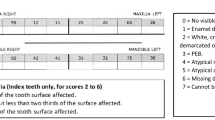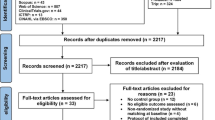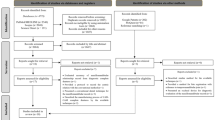Abstract
Objectives
One or more missing teeth, such as hypodontia, make it difficult to obtain accurate results in age estimation methods. This paper aims to test the accuracy of the models developed by Bedek et al. that can estimate age with fewer than seven teeth for Turkish children.
Materials and methods
Panoramic radiographs of 1118 children (540 girls and 578 boys) aged between 6 and 16 years were evaluated using the Willems method and Bedek models for the entire sample and for different ages and sexes. Differences between dental age (DA) and chronological age (CA) calculated for all methods for each sex and all age groups were analyzed the paired sample t-test and Wilcoxon signed rank test. The accuracy of the DA estimation methods was determined by the proximity of DA to CA by calculating mean absolute error (MAE).
Results
While all Bedek models underestimated CA by 0.2 to 0.1 years, the Willems method overestimated CA by 0.3 years. DA-CA difference in the total sample and girls was statistically significant in all methods. In the total sample, the seven- and four-teeth models had the lowest MAE, while the one-tooth model had the highest MAE.
Conclusions
Seven- and four-teeth models were the most suitable for age estimation, and all models except the one-tooth model were found to be more accurate than the Willems method in northwestern Turkish children.
Clinical relevance
Especially in children with hypodontia, it may be possible to estimate DA with the use of Bedek models.

Similar content being viewed by others
References
Yang Z, Geng K, Liu Y, Sun S, Wen D, Xiao J, Zheng Y, Cai J, Zha L, Liu Y (2019) Accuracy of the Demirjian and Willems methods of dental age estimation for children from cental southern China. Int J Legal Med 133(2):593–601
Schmeling A, Geserick G, Reisinger W, Olze A (2007) Age estimation. Forensic Sci Int 165(2):178–181
Schmeling A, Reisinger W, Loreck D, Vendura K, Markus W, Geserick G (2000) Effects of ethnicity on skeletal maturation: consequences for forensic age estimations. Int J Legal Med 113(5):253–258
Puranik M, Rajagopalachari US, Chandramohan P (2015) Dental age estimation methods-A review: LAP Lambert Academic Publ.
Liversidge HM (2012) The assessment and interpretation of Demirjian, Goldstein and Tanner’s dental maturity. Ann Hum Biol 39(5):412–431
Demirjian A, Goldstein H, Tanner JM (1973) A new system of dental age assessment. Hum Biol 45(2):211–227
Tunc ES, Koyuturk AE (2008) Dental age assessment using Demirjian’s method on northern Turkish children. Forensic Sci Int 175(1):23–26
Willems G (2001) A review of the most commonly used dental age estimation techniques. J Forensic Odontostomatol 19(1):9–17
Willems G, Van Olmen A, Spiessens B, Carels C (2001) Dental age estimation in Belgian children: Demirjian’s technique revisited. J Forensic Sci 46(4):893–895
Sehrawat JS, Singh M (2017) Willems method of dental age estimation in children: a systematic review and meta-analysis. J Forensic Leg Med 52:122–129
Bedek I, Dumančić J, Lauc T, Marušić M, Čuković-Bagić I (2020) New model for dental age estimation: Willems method applied on fewer than seven mandibular teeth. Int J Legal Med 134(2):735–743
Çarıkçıoğlu B, Değirmenci A (2021) Accuracy of the radiographic methods of Willems, Cameriere and Blenkin–Evans on age estimation for Turkish children in the northwest Anatolia region. Aust J Forensic Sci 1–12.
Koç A, Özlek E, Öner Talmaç AG (2021) Accuracy of the London atlas, Willems, and Nolla methods for dental age estimation: a cross-sectional study on Eastern Turkish children. Clin Oral Investig 25(8):4833–4840
Onat Altan H, Altan A, Bilgiç F, Akıncı Sözer Ö, Damlar İ (2016) The applicability of Willems’ method for age estimation in southern Turkish children: A preliminary study. J Forensic Leg Med 38:24–27
Akkaya N, Yilanci H, Göksülük D (2015) Applicability of Demirjian’s four methods and Willems method for age estimation in a sample of Turkish children. Leg Med (Tokyo) 17(5):355–359
Ozveren N, Serindere G, Meric P, Cameriere R (2019) A comparison of the accuracy of Willems’ and Cameriere’s methods based on panoramic radiography. Forensic Sci Int 302:109912
Apaydin BK, Yasar F (2018) Accuracy of the demirjian, willems and cameriere methods of estimating dental age on turkish children. Niger J Clin Pract 21(3):257–263
Sheriff SO, Medapati RH, Ankisetti SA, Gurrala VR, Haritha K, Pulijala S, Balla SB (2020) Testing the accuracy of Bedek et al’s new models based on 1-to-7 mandibular teeth for age estimation in 7–15 year old south Indian children. J Forensic Odontostomatol 2(38):22–39
Gribben M (2021) Public Health England (PHE) and Faculty of General Dental Practice (UK) (FGDP(UK)) guidance notes for dental practitioners on the safe use of X-ray equipment 2020: an update for the dental team. Dent Update 48(9):719–724
Ritz-Timme S, Cattaneo C, Collins MJ, Waite ER, Schütz HW, Kaatsch HJ, Borrman HI (2000) Age estimation: the state of the art in relation to the specific demands of forensic practise. Int J Legal Med 113(3):129–136
Giles E, Klepinger LL (1988) Confidence intervals for estimates based on linear regression in forensic anthropology. J Forensic Sci 33(5):1218–1222
Kelmendi J, Vodanović M, Koçani F, Bimbashi V, Mehmeti B, Galić I (2018) Dental age estimation using four Demirjian’s, Chaillet’s and Willems’ methods in Kosovar children. Leg Med (Tokyo) 33:23–31
Liversidge HM, Smith BH, Maber M (2010) Bias and accuracy of age estimation using developing teeth in 946 children. Am J Phys Anthropol 143(4):545–554
Rakhshan V, Rakhshan H (2015) Meta-analysis of congenitally missing teeth in the permanent dentition: Prevalence, variations across ethnicities, regions and time. Int Orthod 13(3):261–273
Eliacik BK, Atas C, Polat GG (2021) Prevalence and patterns of tooth agenesis among patients aged 12–22 years: a retrospective study. Korean J Orthod 51(5):355–362
Badrov J, Lauc T, Nakaš E, Galić I (2017) Dental Age and Tooth Development in Orthodontic Patients with Agenesis of Permanent Teeth. BioMed Res Int 2017:8683970–8683970
Haavikko K (1974) Tooth formation age estimated on a few selected teeth. A simple method for clinical use. Proc Finn Dent Soc 70(1), 15–19.
Singh M, Sehrawat J, Sharma V (2018) Accuracy level of Haavikko’s dental age estimation method in children: a systematic review and meta-analysis. Rom J Leg Med 26(4):397–402
Sezer B, Çarıkçıoğlu B (2022) Accuracy of the London Atlas, Haavikko’s Method and Cameriere’s European Formula of dental age estimation in Turkish children. Leg Med (Tokyo) 54:101991
Wang Y, Huang S, Liu H (2011) Use of Haavikko’s method to assess dental age in Chinese children. Community Dent Health 28(2):160–164
Demirjian A, Goldstein H (1976) New systems for dental maturity based on seven and four teeth. Ann Hum Biol 3(5):411–421
Flood SJ, Franklin D, Turlach BA, McGeachie J (2013) A comparison of Demirjian’s four dental development methods for forensic age estimation in South Australian sub-adults. J Forensic Leg Med 20(7):875–883
Ambarkova V, Galić I, Vodanović M, Biočina-Lukenda D, Brkić H (2014) Dental age estimation using Demirjian and Willems methods: cross sectional study on children from the Former Yugoslav Republic of Macedonia. Forensic Sci Int 234:187.e181-187
Bunyarit SS, Jayaraman J, Naidu MK, Yuen Ying RP, Nambiar P, Asif MK (2020) Dental age estimation of Malaysian Chinese children and adolescents: Chaillet and Demirjian’s method revisited using artificial multilayer perceptron neural network. Aust J Forensic Sci 52(6):681–698
Namene J, Doggalli N (2018) Challenges in forensic odontology age estimation methods. Int J Forensic Odontol 3(2):46–49
Author information
Authors and Affiliations
Contributions
Conceptualization: Burak Çarıkçıoğlu, Berkant Sezer; methodology: Burak Çarıkçıoğlu, Berkant Sezer; formal analysis and investigation: Burak Çarıkçıoğlu, Berkant Sezer; writing—original draft preparation: Burak Çarıkçıoğlu; writing—review and editing: Burak Çarıkçıoğlu, Berkant Sezer.
Corresponding author
Ethics declarations
Ethical approval
Ethical approval for this study was provided by the Çanakkale Onsekiz Mart University, School of Medicine, Clinical Research Ethic Board (Protocol no. 18920478–050.01.04–2100054264), and the study was conducted in accordance with all the principles stated in the Declaration of Helsinki.
Informed consent
Informed consent was not needed due to the retrospective design of the study.
Conflict of interest
The authors declare no competing interests.
Additional information
Publisher's note
Springer Nature remains neutral with regard to jurisdictional claims in published maps and institutional affiliations.
Rights and permissions
About this article
Cite this article
Çarıkçıoğlu, B., Sezer, B. Dental age estimation with fewer than mandibular seven teeth: An accuracy study of Bedek models in Turkish children. Clin Oral Invest 26, 5773–5784 (2022). https://doi.org/10.1007/s00784-022-04534-6
Received:
Accepted:
Published:
Issue Date:
DOI: https://doi.org/10.1007/s00784-022-04534-6




